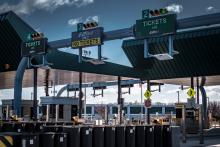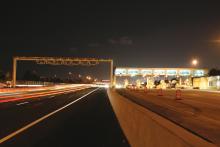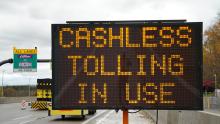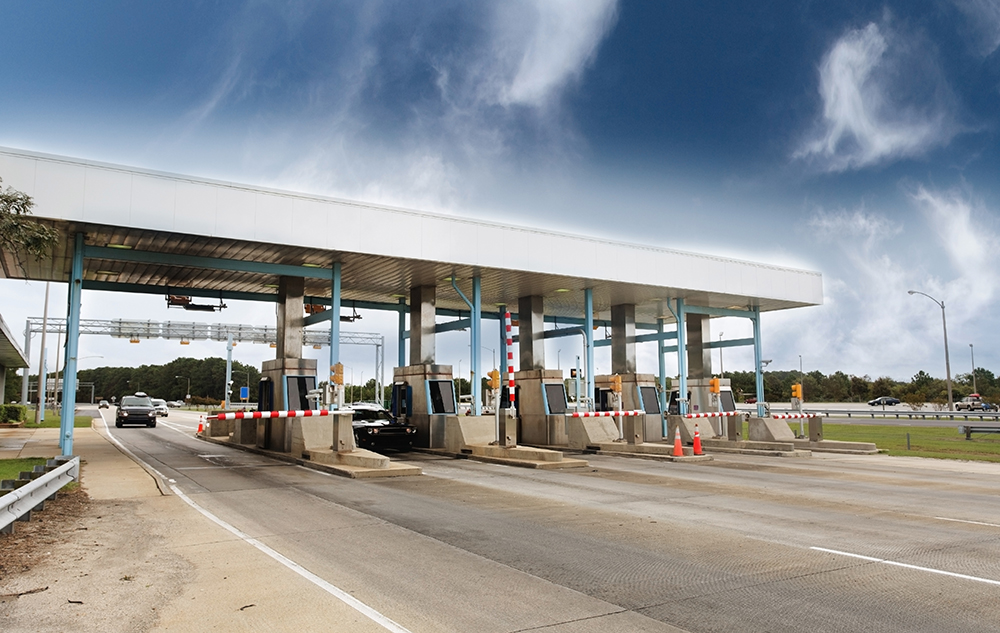
Electronic tolling has become a cornerstone for the next wave of innovation, says IBTTA’s Bill Cramer. So is this the end of the road for toll plazas?
In the three decades since electronic tolling made its appearance as a streamlined, efficient way for highway users to pay for the tolled roads, bridges and tunnels they drive, more than 300 facilities across the US and many others around the world are relying on electronic toll collection (ETC) as they enter an ever-changing, tech-enabled decade.
IBTTA’s TollMiner data visualisation tool tells the story for North America: 114 operators running 321 tolled facilities using ETC, covering 6,235 centre-line miles of roadway. The large-scale adoption of ETC has enabled the concept and practice of ‘cashless’ tolling, which eliminates cash payments (and toll plazas) completely from the facilities.
And that cornerstone innovation, in turn, has helped position tolling as an important part of the solution, as policymakers everywhere grapple with the dual challenge of a long-standing crisis of underfunded highway infrastructure, combined with profound changes in the way the surface transportation system is used and conceptualised.
“It is an amazing time to be in the transportation industry,” said IBTTA president Samuel Johnson and chief operations officer for the Transportation Corridor Agencies (TCA) in Orange County, California, in an interview for IBTTA’s Tolling Points blog. “The convergence of transformative technologies will greatly enhance safety. The rapid introduction of new service offerings will influence vehicle ownership and business models. And there is a clear recognition of the need for a more sustainable financial model to fund transportation needs.”
The reality of “groundbreaking technologies, micro transportation services and consumer influence dictate that transportation professionals think differently about the future”, Johnson said. “The tolling industry, in particular, has to give thought to new payment models, customer changes and its solid business model of delivering and maintaining infrastructure, with the reality that money still doesn’t mean we can build our way out of congestion. Balancing these aspects in the new era may push our agencies to broader thinking and participation in the overall success of mobility, with user fees playing a central role.”
Global phenomenon
The various forms of electronic tolling have been an international phenomenon from the very beginning, with Autostrade - now Autostrade per l’Italia - introducing a full, national ETC system in 1989, using an optical fibre network that stretched more than 3,000km. That same year, the Dallas North Tollway, operated by the North Texas Tollway Authority, introduced a newfangled RFID toll collection system called TollTag, at almost the same time that Oklahoma opened its PIKEPASS system.
Many others stepped up during the same period. Bergen in Norway opened the first ETC system anywhere in 1986, and Trondheim followed with the world’s first full-speed electronic system in 1991. Portugal’s Via Verde opened in 1991 and became the world’s first universal, all-electronic tolling system in 1995, the same year that SR 91 Express Lanes opened using ETC in California.
From its first uses in Texas and Oklahoma in 1989, electronic tolling has become the established default for tolled facilities in most parts of the United States. Many systems still operate one or two cash lanes for customers who can’t - or won’t - make the switch, and some states have special circumstances where geography, customer profiles or even international boundaries dictate continued use of toll booths.
But with the concept now fully mainstreamed and the technology continuing to evolve, electronic tolling is a well-entrenched feature of new tolled highways, bridges and tunnels that the key question is not whether to go all-electronic, but how that system will operate a decade from now. Tolling agencies are paying close attention to app developers promising an era of seamless tolling through mobile phones, and a number of countries are considering, or have been testing, electronic tolling systems that use satellites rather than highway gantries.
Yesterday’s tolls
In the US, IBTTA CEO Patrick Jones recalls the days when it was news to drivers and decision-makers when he insisted that “yesterday’s toll roads were stop-and-wait, but today’s tech-enabled tollway is go-go-go”. It’s been years since he’s had to make that argument - because by now, most drivers have come to expect cashless tolling.
“Some of us still remember our grandparents’ toll roads,” he says. “But anyone who has tried to navigate through a congested urban corridor, or pass seamlessly between two or more Express Lane systems, has experienced the powerful benefits of cashless tolling in real time.”
And that ties in with something IBTTA has known about modern tolling for a very long time. “Seeing is believing, and our member agencies have realised that the more their customers experience the benefits of tolled infrastructure, the more they like it,” Jones say. “It’s an incredible relief to know that you can get to work on schedule or cut through rush hour traffic in time for a day care pick-up or your daughter’s soccer game.”
For years, customers have been telling their own stories about why and how much they appreciate the all-electronic tolling experience, with one New England driver describing her transponder as her favourite travel gadget. That growing familiarity and buy-in helps explain why so many US states have embraced electronic tolling (see panel).
Innovation to cornerstone
By now, the biggest news about electronic and cashless tolling is that they aren’t news anymore. The cluster of technologies that was once an upstart, then a promising opportunity, is now a key cornerstone for the next round of innovation in surface transportation funding, financing and management.
And just in time, given the plethora of new needs and expectations that surface transportation is being called to address.
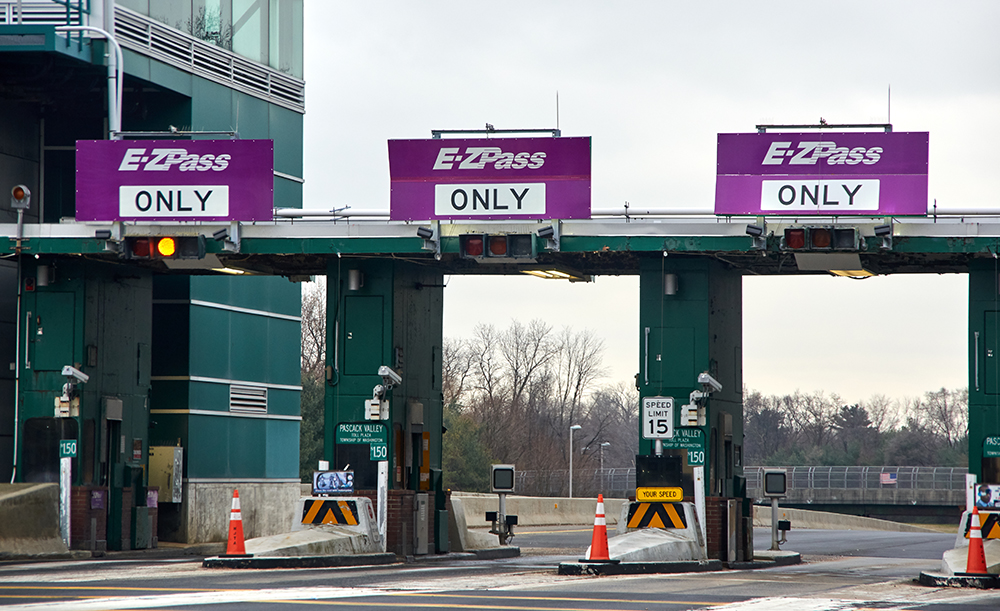
“One of the big opportunities is our industry adjusting to the demand for consumer convenience, driven by Mobility as a Service and changes in vehicle ownership,” Johnson told Tolling Points. “Autonomous vehicles and changes in ownership models could result in increased usage of toll facilities, as service providers look to optimise their asset investments by maximising the number of customer pick-ups. New contra-flow trips could increase the financial profile of tolled facilities, perhaps providing opportunities for increased transportation investment.”
IBTTA members are also working with contiguous transit operators, providing free access to Express Lanes for bus rapid transit routes that can offer speedy, reliable mobility to passengers who would otherwise use private vehicles - or be left out of the mix entirely, if they couldn’t afford to drive.
Those projects highlight an evolution in the underlying purpose of tolled capacity: with many Express Lanes, the primary mission is not to generate revenue, but to guarantee a predictable, minimum traffic speed, using the price of the lane to regulate flow.
These examples and so many others point to fundamental changes, not only in the technologies tolling agencies can rely on, but in the role they play and the relationships they build with their communities. Those shifts can only be expected to accelerate, as technologies continue to advance and customers see the opportunity for safer, more reliable mobility.
From stop-and-wait to go-go-go
- In 2009, Denver, Colorado’s E470 Public Highway Authority introduced cashless tolling.
- In 2016, an IBTTA member survey captured the explosive growth in toll technology, with nearly 20 million new transponders issued in just five years, a 64% increase in new toll accounts, 76% growth in cashless toll transactions - and a sharp decline in cash payments.
- In 2016, Massachusetts went all-electronic statewide.
- In 2017, Maryland earned praise from the Mid-Atlantic Region of the American Automobile Association for the “remarkable feat” of introducing all-electronic tolling along its Inter County Connector. Three years later, Maryland and Virginia are teaming up on a congestion-busting bridge widening project that a leading newspaper calls “an unusual example of interstate cooperation”. And next year, Maryland expects to be fully cashless statewide.
- New York City and Boston are now considering congestion pricing systems to beat epic gridlock on downtown streets.
- States from Virginia to California are using cashless technology to combat congestion with multiple tolled Express Lanes That are rapidly evolving into technology-enabled managed lane networks.
- The E-ZPass network, which celebrated its 25th anniversary in 2018, now spans 17 states with more than 39 million registered users. E-ZPass is the largest ETC consortium spanning multiple political boundaries in the world.
- In Washington State, one of the country’s newest all-electronic tolling systems is off to a fast start, with 84% of users opting for electronic tolling through the new SR 99 Tunnel through Seattle’s downtown core.


